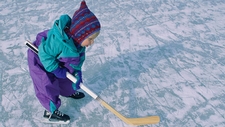Making Choices Based on Weather and Seasons

TEKS Objective
The student is expected to identify the importance of weather and seasonal information to make choices in clothing, activities, and transportation.
Essential Understanding
The student knows that there are recognizable patterns in the natural world and among objects in the sky.
Science Background
National Weather Service: National Oceanic and Atmospheric Administration (website) - Detailed weather information at the local, state and national levels, including warnings and forecasts.
National Weather Service
National Oceanic and Atmospheric Administration, www.noaa.gov
Signature Lesson
Weather Whys: Utah Educational Network (website) - We are especially conscious of the importance of weather when deciding what to wear and do during seasonal changes. In this lesson, students identify qualities that make different types of clothing more appropriate for certain seasons (e.g., light-colored clothes reflect sunlight away from us in summer, while heavier, darker clothing retains warmth in winter).
Weather Whys
Utah Educational Network, www.uen.org
Dressing for the Season: Utah Educational Network (website) - Students observe and identify weather conditions in each season, and then dress a cut-out doll appropriately for a field trip outside at different times of the year.
Dressing for the Season
Utah Educational Network, www.uen.org
- Supporting Lessons
- Extensions
- Assessment Ideas
- Literature Connections
- Related
TEKS - Additional Resources
Supporting Lessons
What’s the Season? Science NetLinks (website) - Students learn how weather can change from season to season.
What’s the Season?
Science NetLinks, www.sciencenetlinks.com
Elaboration Lessons and Extensions
Learning the Effects of Weather: Utah Educational Network (website) - Students discover and describe how weather affects people and animals, and learn about Navajo and Ute stories told during hibernation.
Learning the Effects of Weather
Utah Educational Network, www.uen.org
Weather Complaints: National Geographic Xpeditions (website) - Students research the weather and climate in their home region and other selected cities, and think about complaints people might make about the weather in different places.
Weather Complaints
National Geographic Xpeditions, www.nationalgeographic.com/expeditions
Assessment Ideas
In their science notebooks/journals, have students develop charts that use symbols and words to indicate the appropriate clothing for different temperatures and weather conditions. For example, one entry might say “90 degrees: very hot; wear lightweight clothing.” Instruct students to include drawings of the clothes to be worn in each situation.
Weather and People: BBC Schools (website) - Weather and climate influence how people build houses, the clothes they wear, and the types of sports they play. As an assessment, direct students to answer the guiding questions on this page.
Literature Connections
Climates. Alberti, Theresa Jarosz (ISBN: 0-736-83735-3)
Hibernation. Hall, Margaret (ISBN: 978-0-7368-6339-1)
Fall Is Here! I Love It! Good, Elaine (ISBN: 1-561-48142-4)
Reasons for the Seasons. Gibbons, Gail (ISBN: 0-823-41238-5)
Sunshine Makes the Seasons. Branley, Franklyn (ISBN: 0-060-59205-2)
A Tree for all Seasons Bernard, Robin (ISBN: 0-792-2942-70)
What’s the Weather Today? Fowler, Allan (ISBN: 0-0516-44918-4)
Cloudy with a Chance of Meatballs. Barrett, Judi (ISBN: 0-689-70749-5)
Weather Words and What They Mean. Gibbons, Gail (ISBN-10: 082340952X)
Who Cares About the Weather? Berger, Melvin and Lunis, Natalie (ISBN-10: 1567840043)
Additional Resources
What’s the Weather: FOSSWEB (website) - Cold, hot, warm, cool: what does the temperature mean to you? This interactive animation asks students to help the bear decide what to wear, based on the weather outside.
What’s the Weather
FOSSWEB, www.fossweb.com
Weather: NOAA Education (website) - Listing and description of a variety of weather-related programs and informational resources.
TEKS Navigation
Grade 2
Need Assistance?
If you need help or have a question please use the links below to help resolve your problem.

Comments